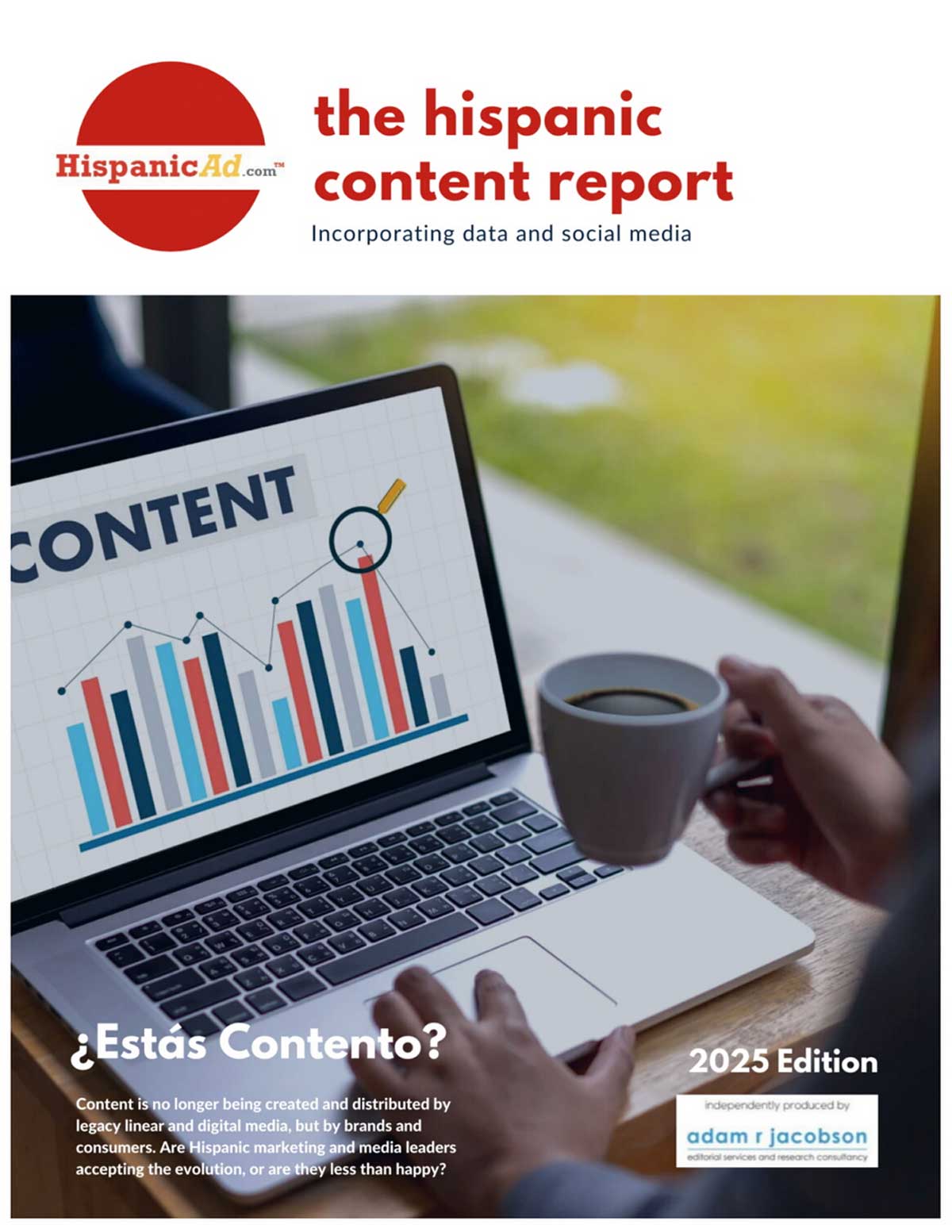 National Instruments announced that Carla Piñeyro Sublett, has joined the company as its first chief marketing officer (CMO). In this role, Piñeyro Sublett will lead the global marketing efforts to elevate the company’s global brand, enhance customer engagement and identify efficiencies in proactive demand generation for growth.
National Instruments announced that Carla Piñeyro Sublett, has joined the company as its first chief marketing officer (CMO). In this role, Piñeyro Sublett will lead the global marketing efforts to elevate the company’s global brand, enhance customer engagement and identify efficiencies in proactive demand generation for growth.
Business
Piñeyro Sublett named CMO at National Instruments
Mind the Gap: Women’s leadership in public relations [REPORT]
 In most professions, men hold the vast majority of CEO positions. It’s no exception in public relations, where current research shows that nearly 80 percent of chief executives are male. In an industry that is predominantly women, the leadership gap is especially pronounced.
In most professions, men hold the vast majority of CEO positions. It’s no exception in public relations, where current research shows that nearly 80 percent of chief executives are male. In an industry that is predominantly women, the leadership gap is especially pronounced.
The post-digital era is upon us [REPORT]
 The enterprise is entering a new “post-digital” era, where success will be based on an organization’s ability to master a set of new technologies that can deliver personalized realities and experiences for customers, employees and business partners
The enterprise is entering a new “post-digital” era, where success will be based on an organization’s ability to master a set of new technologies that can deliver personalized realities and experiences for customers, employees and business partners
The Economic Benefits of Latino Immigration: How the Migrant Hispanic Population’s Demographic Characteristics Contribute to US Growth [REPORT]
![]() The Hispanic community in the United States has contributed significantly to US economic growth in recent decades and will continue to do so over the next 10 to 20 years. This contribution derives partially from demographic vitality: the fact that Hispanics are the youngest and largest minority group in America and are on a path toward becoming an increasingly large share of the US labor force. Higher fertility rates, net immigration, and growing labor force participation rates will reinforce this trend. This paper presents evidence showing that Hispanic educational attainments are now rapidly converging to the US average. By Gonzalo Huertas (PIIE) and Jacob Funk Kirkegaard (PIIE)
The Hispanic community in the United States has contributed significantly to US economic growth in recent decades and will continue to do so over the next 10 to 20 years. This contribution derives partially from demographic vitality: the fact that Hispanics are the youngest and largest minority group in America and are on a path toward becoming an increasingly large share of the US labor force. Higher fertility rates, net immigration, and growing labor force participation rates will reinforce this trend. This paper presents evidence showing that Hispanic educational attainments are now rapidly converging to the US average. By Gonzalo Huertas (PIIE) and Jacob Funk Kirkegaard (PIIE)
Global Powers of Retailing 2019 [REPORT]
 The global economy is currently at a turning point. Until early 2018, the global economy displayed strong growth. With inflation accelerating in major markets, governments making shifts in monetary and fiscal policies, and most of the emerging markets experiencing significant currency depreciation, the global economy will slow down in the near future. For retailers, this change will mean slower consumer spending growth, higher consumer prices, and disrupted global supply chains.
The global economy is currently at a turning point. Until early 2018, the global economy displayed strong growth. With inflation accelerating in major markets, governments making shifts in monetary and fiscal policies, and most of the emerging markets experiencing significant currency depreciation, the global economy will slow down in the near future. For retailers, this change will mean slower consumer spending growth, higher consumer prices, and disrupted global supply chains.
When it comes to agencies, brands care more about cost than transparency
 Price, not transparency or partnerships, remains the priority for clients when it comes to their agencies.
Price, not transparency or partnerships, remains the priority for clients when it comes to their agencies.
To scale direct-to-consumer brands will need to advertise
![]() As Marsha Appel points out, we have been here before. Direct-to-consumer (DTC) is not a new business model, it is an old one. What is different is the technology that facilitates the business model. What is not different is that people still buy the brands that are meaningful to them. by Nigel Hollis
As Marsha Appel points out, we have been here before. Direct-to-consumer (DTC) is not a new business model, it is an old one. What is different is the technology that facilitates the business model. What is not different is that people still buy the brands that are meaningful to them. by Nigel Hollis
Alban named VP of Communications at Viacom International Media Networks
 Viacom International Media Networks of the Americas announced that Michelle Alban has joined the organization as Vice President of Communications. In this new role, Alban will lead the development and execution of all internal and external communications strategies for VIMN of the Americas, which includes Latin America, U.S. Hispanic and Canada.
Viacom International Media Networks of the Americas announced that Michelle Alban has joined the organization as Vice President of Communications. In this new role, Alban will lead the development and execution of all internal and external communications strategies for VIMN of the Americas, which includes Latin America, U.S. Hispanic and Canada.
Conde joins Walmart Board of Directors
 Walmart Inc. announced that its board of directors has appointed Cesar Conde, chairman of NBCUniversal International Group and NBCUniversal Telemundo Enterprises, as a new independent director to the company’s board, effective immediately.
Walmart Inc. announced that its board of directors has appointed Cesar Conde, chairman of NBCUniversal International Group and NBCUniversal Telemundo Enterprises, as a new independent director to the company’s board, effective immediately.
How to keep your sanity in the social media realm. Part 2
 By Gonzalo López Martí – Creative director, etc. / LMMiami.com
By Gonzalo López Martí – Creative director, etc. / LMMiami.com
- Ignore FOMO (that’d be Fear Of Missing Out)
- Everything is sugarcoated, spun, photoshopped and airbrushed on social media.
- Literally and figuratively: from job promotions to muscle tones.
- It sounds obvious but you’d be surprised at the great deal of grownups whose brittle self-esteem is vulnerable to the onslaught of fakery they are exposed to on social media.
Retail Economic Forecast 2019
 The National Retail Federation forecast that retail sales during 2019 will increase between 3.8 percent and 4.4 percent to more than $3.8 trillion despite threats from an ongoing trade war, the volatile stock market and the effects of the government shutdown.
The National Retail Federation forecast that retail sales during 2019 will increase between 3.8 percent and 4.4 percent to more than $3.8 trillion despite threats from an ongoing trade war, the volatile stock market and the effects of the government shutdown.
How to Lead a Successful Sustainability Program
 Whether purchasing recycled paper and plastic, eliminating toxic chemicals from products, or setting goals to reduce carbon emissions, a growing number of global brands have upped their games to meet the standards of environmental watchdogs and conscious consumers, as well as the social media armies that stand behind them.
Whether purchasing recycled paper and plastic, eliminating toxic chemicals from products, or setting goals to reduce carbon emissions, a growing number of global brands have upped their games to meet the standards of environmental watchdogs and conscious consumers, as well as the social media armies that stand behind them.
Desiree Katzenberger from d expósito & Partners recognized as a Rising Star
 Desiree Katzenberger, Director of Media Strategy and Planning at d expósito & Partners, was recognized February 6th, in New York City for being a “Rising Star,” a distinction created by Cynopsis Media which celebrated its fourth annual Cynopsis TV and Rising Star Awards at The Yale Club in New York City.
Desiree Katzenberger, Director of Media Strategy and Planning at d expósito & Partners, was recognized February 6th, in New York City for being a “Rising Star,” a distinction created by Cynopsis Media which celebrated its fourth annual Cynopsis TV and Rising Star Awards at The Yale Club in New York City.
Artificial Intelligence Innovation [REPORT]
 Over the past few years, deep learning has gone from an esoteric branch of AI, focusing on theory, to being so mainstream that even an actress from Twilight has published an academic paper on it. This rise of deep learning over traditional machine learning methods has also led to the creation of a host of new platforms designed to help businesses improve work and work flow.
Over the past few years, deep learning has gone from an esoteric branch of AI, focusing on theory, to being so mainstream that even an actress from Twilight has published an academic paper on it. This rise of deep learning over traditional machine learning methods has also led to the creation of a host of new platforms designed to help businesses improve work and work flow.
Super Bowl LIII. Some random thoughts
 By Gonzalo López Martí – Creative director, etc / LMMiami.com
By Gonzalo López Martí – Creative director, etc / LMMiami.com
- It was a Super Bowl to forget.
- Sports and advertising wise.
- If the annual January NFL extravaganza is a barometer of the national sentiment, we might be going through a collective lethargy of sorts.
The Digital Demise Of Common Courtesy
 Have you been ghosted recently? For those unfamiliar with the term, “ghosting” is the practice of suddenly cutting all ties and communication with no explanation, use of which which grew in popularity with millennials and their dating habits.
Have you been ghosted recently? For those unfamiliar with the term, “ghosting” is the practice of suddenly cutting all ties and communication with no explanation, use of which which grew in popularity with millennials and their dating habits.
Women at work: Playing to win? Or not lose? [REPORT]
 According to the research, women’s inclination to take risks declines as they become more experienced in their careers – even as their self-confidence grows. Forty-five percent of respondents with less than five years of experience say they are open to taking big risks to advance their careers, versus 37 percent with over 15 years of experience. Women of color are the biggest professional risk-takers, with 57 percent saying they are open to taking big chances versus 38 percent of white women.
According to the research, women’s inclination to take risks declines as they become more experienced in their careers – even as their self-confidence grows. Forty-five percent of respondents with less than five years of experience say they are open to taking big risks to advance their careers, versus 37 percent with over 15 years of experience. Women of color are the biggest professional risk-takers, with 57 percent saying they are open to taking big chances versus 38 percent of white women.
Hector Orci to be inducted to 2019 AAF Hall Of Fame
 American Advertising Federation’s Advertising Hall of Fame this year will inducted Hector Orci – founder and co-chairman, Orci.
American Advertising Federation’s Advertising Hall of Fame this year will inducted Hector Orci – founder and co-chairman, Orci.
Tips to Win More Agency New Business This Year
![]() February has started to creep onto my calendar, so it must be time to discuss agency new business resolutions. They may be your “New Year’s resolutions,” or they might be your annual new business goals, formal or informal. Either way, these annual new business “resolutions” are notorious for ending up on the back burner and fading away into good intentions, as we quickly fall back into familiar habits. Before that happens, I want to share a few tips that can help you set up positive, repeatable sales habits while the new year is still full of maximum possibilities. by Mark Duval / The Duval Partnership
February has started to creep onto my calendar, so it must be time to discuss agency new business resolutions. They may be your “New Year’s resolutions,” or they might be your annual new business goals, formal or informal. Either way, these annual new business “resolutions” are notorious for ending up on the back burner and fading away into good intentions, as we quickly fall back into familiar habits. Before that happens, I want to share a few tips that can help you set up positive, repeatable sales habits while the new year is still full of maximum possibilities. by Mark Duval / The Duval Partnership
Telecom and Media Firms Selling Data Are Facing Backlash
 Data privacy battles are heating up now that a group of US senators have asked regulators to investigate how telecom firms sell people’s location data.
Data privacy battles are heating up now that a group of US senators have asked regulators to investigate how telecom firms sell people’s location data.



























